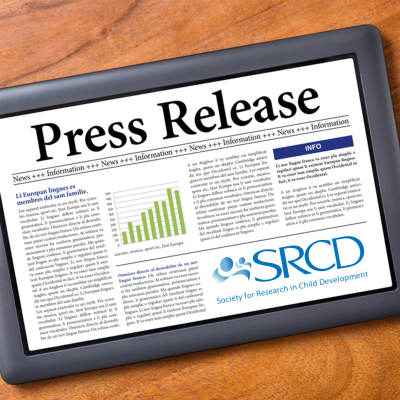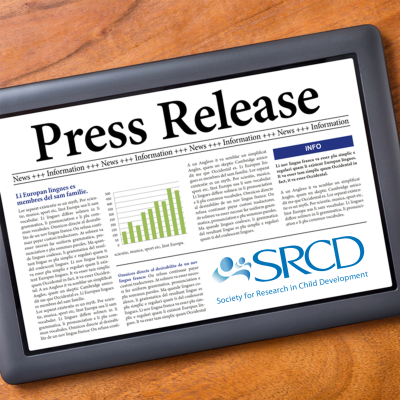Study Shows that Students Compare Their Math Performance with Their own Reading Performance to Determine Whether They are a “Math Person” or “Reading Person”
PRESS RELEASE / CHILD DEVELOPMENT: Embargoed for Release on October 12, 2022.
Such tendency of comparisons becomes more pronounced as students progress through their K-12 years
A student’s self-perception of what they are good at and how good they are at different types of tasks predicts their future scholastic performance and choices. For example, students who perceive themselves as good at math are more likely to engage in math class, earn good grades in math, and enroll in advanced math classes as they progress through their educational careers compared to students who doubt their math ability or aptitude. Researchers at the University of Wisconsin-Madison, University of California, Irvine, and Technical University Dortmund in Germany conducted a first of its kind study to directly chart changes in students’ use of dimensional comparisons (for example, “How good am I in Math compared with English?”) in self-evaluations of their math and verbal abilities (math and verbal self-concepts) from Grades 1 to 12.
“Our study examined whether there are age-related changes in students’ use of dimensional comparisons and whether these changes can explain the increasing differentiation of students’ math and verbal self-concepts over time,” said Sirui Wan, postdoctoral research associate at the Department of Psychology, University of Wisconsin-Madison. “Studying these questions is important because it clarifies the role of dimensional comparisons in shaping students’ self-evaluations at different stages in their educational careers, and because dimensional comparisons can significantly affect students' future educational choices and areas of specialization.”
Data were used from the Childhood and Beyond Study, an existing longitudinal study of development and socialization effects on children’s achievement, motivation and behavior beginning in Grades K-3 developing on Cohort. The data were collected between 1987 and 1999 and the children were initially followed for three consecutive years and then again after a three-year funding gap for three additional consecutive years. The final sample included 1,069 children (gender was almost perfectly balanced). The sample was primarily European American (91%) and only included a small minority of African Americans (1%), Asians (5%), Indians (less than 1%) and Hispanics (less than 1 %). Children attended ten public, elementary schools in four middle-class school districts in the suburbs of a large midwestern city in the United States. Participating families were generally middle-or working-class, two-parent families (90% with two parents).
The study asked students to evaluate their math and verbal ability self-concepts over time in multiple ways:
- Without explicit instructions about which type of comparison to use such as “How good are you at math [reading]”
- Based on dimensional comparisons such as: “How good are you at math [reading], compared to other activities and subjects?” and/or
- Based on social comparisons with peers such as: “If you were to list all the students from best to worst in math [reading], where are you?”
By comparing students’ answers across these items, the study provided direct evidence that students’ use of dimensional comparisons in their ability self-evaluations increased over time. Specifically, this study demonstrated that over time, there was a decline in the correlations between math and language ability self-concepts when students were asked to evaluate their abilities based on dimensional comparisons. However, the correlations between math and language ability self-concepts stayed consistently positive when students were asked to evaluate their abilities based on social comparisons. These findings suggest that students’ use of dimensional comparisons plays a role in explaining the age-related flip in the correlation between students’ math and verbal self-concepts during the adolescent years, a pattern reported by previous meta-analyses.
In other words, this study demonstrates that students become more and more likely to engage in dimensional comparisons to determine whether they are either a “math person” or a “reading person” as they progress through their K-12 years. This tendency may explain why some students form a specialized academic identity during high school. The phenomenon likely plays a big role in these students’ decisions about what classes to enroll in and what activities to invest time and effort in, with long-term consequences for their educational and career trajectories.
The author team notes several limitations within the study. First, the measurements used to operationalize dimensional and social comparison processes were each assessed with a single item, which can limit these measures’ content validity and reliability although items were validated by relating them to teachers’ ratings of math and reading aptitude. Second, the dimensional comparisons items asked students to compare their math or verbal ability with “other subjects.” Accordingly, when students answer these questions, they may think of subjects other than math and language arts, for instance, such subjects as social studies, physical education, and science. Finally, the sample in the data is primarily white and lower-middle to middle class from data collected between 1987 and 1996. Developmental patterns may have changed across different time periods, and the role of dimensional comparisons may be influenced by socio-economic, cultural, or racial influences that cannot be examined with this date. Similar longitudinal studies with more diverse samples are needed.
“It seems that students develop a tendency of thinking of oneself as a “reading person” or a “math person” based on which subject they are better at between the two. This tendency can have a dark side because students might disengage from subjects that they perceive as their relative weaknesses even though they are actually quite good at these subjects compared to other students,” Wan continued. “Unfortunately, we still know very little about whether and how contextual factors, such as the school environment, can affect this tendency. To potentially help ensure students don’t shy away from specific careers because of inaccurate self-evaluations, more research is needed on this topic.”
###
This work was funded by the National Institutes of Health’s Eunice Kennedy Shriver National Institute of Child Health and Human Development.
Summarized from Child Development, Developmental Changes in Students’ Use of Dimensional Comparisons to Form Ability Self-Concepts in Math and Verbal Domains by Wan, S., (University of Wisconsin-Madison and University of California, Irvine), Lauermann, F., (Technical University Dortmund), Bailey D. H., (University of California, Irvine) and Eccles, J.S. (University of California, Irvine). Copyright 2022 The Society for Research in Child Development, Inc. All rights reserved.


